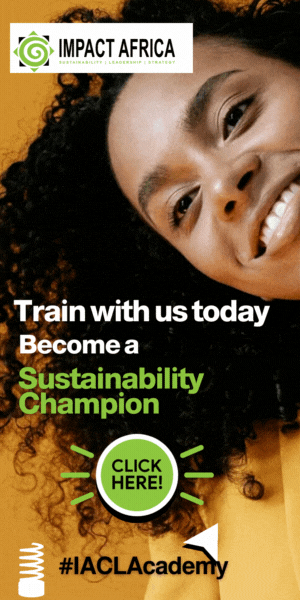The release of the Yearbook of Global Climate Action 2025 in Belém, Brazil, arrives at a decisive moment for global climate governance, outlining how non-state actors, from cities and regions to businesses and community groups, are becoming pivotal in translating the ambitions of the Paris Agreement into measurable progress.
Published as countries submit a new round of climate plans ahead of COP30, the Yearbook presents a clearer picture of who is acting, what progress has been made, where momentum is stalling, why the next decade demands sharper accountability, and how voluntary action is reshaping climate trajectories across regions, including Africa.
This year’s edition describes a global landscape where climate action is expanding rapidly but unevenly. The NAZCA portal, which documents climate commitments from non-Party stakeholders, now records more than 43,000 actors worldwide, up from 18,000 just five years ago, and includes more than 1,400 African entities. These range from mid-sized municipalities trying to secure climate-resilient water systems to agribusinesses transitioning to lower-emission supply chains. Their growing presence reflects both rising awareness and an urgent practical need, as African countries face intensifying climate effects while competing for limited adaptation and mitigation finance.
The Yearbook captures this duality through a set of new socio-economic and initiative-level indicators that trace progress since 2015. Global renewable energy capacity has more than doubled in this period, and several utility alliances have committed significant investments to grid expansion, including in African markets where electrification remains incomplete.
However, the same indicator set reveals the persistent structural gap: grid investments are still critically low worldwide, and the deficit is most acute in regions with rapidly growing populations. Sub-Saharan Africa accounts for the majority of the 666 million people who still lack electricity access, meaning that even as renewable installations expand, inadequate transmission and distribution infrastructure limits economic and social impact.
African governments will have to interpret these findings in practical terms. Without accelerated financing for grid stabilization, storage and distributed renewable systems, the continent risks locking itself into an energy transition that is technologically viable but operationally constrained.
For countries such as Kenya, Ghana and Malawi, where mini-grids and solar home systems have already demonstrated strong performance, the Yearbook’s warning about infrastructure bottlenecks is a signal that investment must focus not just on clean generation but on the architecture that delivers it.
The findings on land use and restoration offer a more encouraging illustration of African leadership. The Yearbook highlights Restore Africa, a community-driven nature-based programme restoring 0.6 million hectares across four countries, with a pathway to reach 1.8 million hectares and support 1.5 million households.
The scale of this work positions Africa as a significant contributor to global restoration, yet the contrast with worsening global deforestation trends underscores the challenge: nature-based solutions are expanding, but not fast enough to counteract accelerating land degradation in several regions. The continent’s restoration efforts therefore carry global importance, especially as food security pressures rise and pastoral livelihoods face mounting climate stress.
Another area where African realities stand out is adaptation finance. The Yearbook reports that global climate finance has tripled, from roughly USD 700 billion in 2015 to USD 1.9 trillion in 2023, but this surge masks the scarcity of adaptation-focused funding. The proportion reaching African cities and regional governments remains small, despite their outsized exposure to extreme weather.
Flood-prone metropolitan centers such as Lagos, Dar es Salaam and Maputo continue to grapple with infrastructure deficits, while drought-stricken rural districts shoulder escalating humanitarian and economic losses. The document’s emphasis on the underfunding of subnational adaptation is therefore not abstract; it reflects the lived experience of local administrations that lack the fiscal autonomy to respond to climate shocks even when early warning systems improve.
Still, the Yearbook points to emerging institutional pathways that could shift this imbalance. Initiatives like the African Cities Water Adaptation Platform & Fund show early steps toward building coordinated, city-level resilience programmes.
While its current membership is modest, its model, linking cities, financiers and technical partners in a shared adaptation architecture, could, if scaled, address some of the systemic financing barriers that African municipalities face. In practice, this would mean that coastal towns confronting rising seas could access bundled finance for drainage redesign, wastewater upgrades and mangrove restoration rather than navigating fragmented funding channels.
Across sectors, the Yearbook illustrates the widening gap between commitments and implementation. Many cooperative climate initiatives cite finance and capacity deficits as their main constraints. This pattern mirrors Africa’s experience: innovation is present, from youth-led waste recovery movements in West Africa to off-grid energy enterprises in the Sahel, but the pipeline of projects that can absorb large-scale capital remains thin.
The data imply a clear set of operational needs: expanded technical assistance to make projects bankable, de-risking tools for small and medium enterprises, and blended finance structures that can transition pilot projects into commercially scalable programmes.
For Africa, the Yearbook is not merely a repository of global progress but a strategic resource. It offers metrics that can be embedded into NDC revisions, national budget cycles and subnational planning processes. Its findings also strengthen the negotiating position of African states at COP30: the document’s transparency around finance gaps, infrastructure deficits and the uneven distribution of resilience investments supports long-standing calls for a fairer financing framework.
What emerges from this year’s report is a clear message: the next decade will be judged not by the proliferation of climate commitments but by the extent to which those commitments reshape energy access, protect ecosystems, expand climate-resilient infrastructure and safeguard livelihoods.
For African countries, that means converting the momentum captured on the NAZCA portal into tangible outcomes, kilowatt-hours delivered to off-grid clinics, restored landscapes that sustain agriculture, and municipal systems equipped to withstand intensifying climate pressures. The Yearbook provides the measurement tools; implementation now rests on political will, institutional coherence and the sustained flow of finance into the continent’s frontline climate priorities.
Engage with us on LinkedIn; Africa Sustainability Matters






